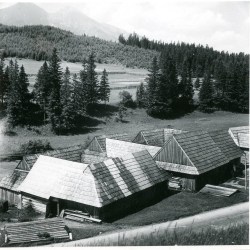Katarína Beličková
One of the most important building materials for our ancestors was, and continues to be timber. From an ethnographic perspective, available building material of Slovakia can be characterized into wood from the north and clay from south. An example from the large group of preserved wooden folk architectures is the village of Ždiar, located under the Tatra Mountains. Apart from the availability of building materials, the architecture of the village was also governed by weather and climatic conditions in which the municipality is located. For its distinctive pattern of settlements and type of folk architecture, the village of Ždiar was declared a Reservation of Folk Architecture (1977). There were two types of protected buildings listed – the atrium farmhouse from Ždiar and the zakopansky house style (known from Poland). The concept of tourism and new construction in Ždiar were all planned to sustain, develop, and maintain the values of folk architecture in the village. However in the span of 40 years it became reasonable to say that the movement for preservation waned. Wood, as the main building material, had to succumb to new treatment methods and architectural parameters. The promotion of tourism built upon authentic environment and benefits of nature had also began foundering overtime as the principles behind town preservation became hard to understand for tourists. The price of effort to raise standards of living and accommodation was the downfall of original buildings of folk architecture. Reproductions of these buildings were erected but these did not conform either exteriorly or interiorly to the principles of the true models. Imitating of folk architecture in the forms of brick buildings only presented an illusion of authenticity. In the eye of the public, however, it had become very easy and convenient to substitute the architectural values and skills of gifted by previous generations.
